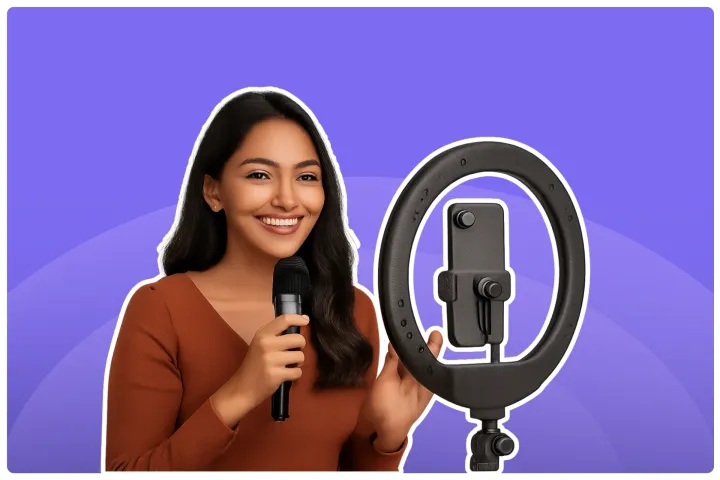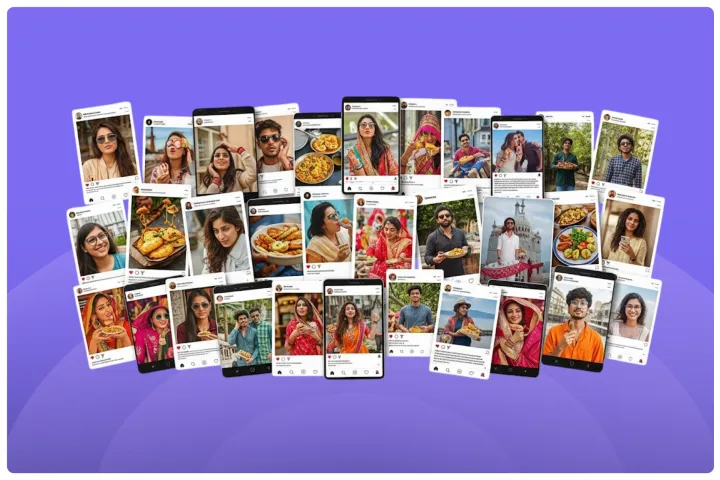Challenges Of User Generated Content: What To Do (2025)
Struggling with user-generated content? Explore common challenges and practical solutions to enhance your content strategy and engage your audience.
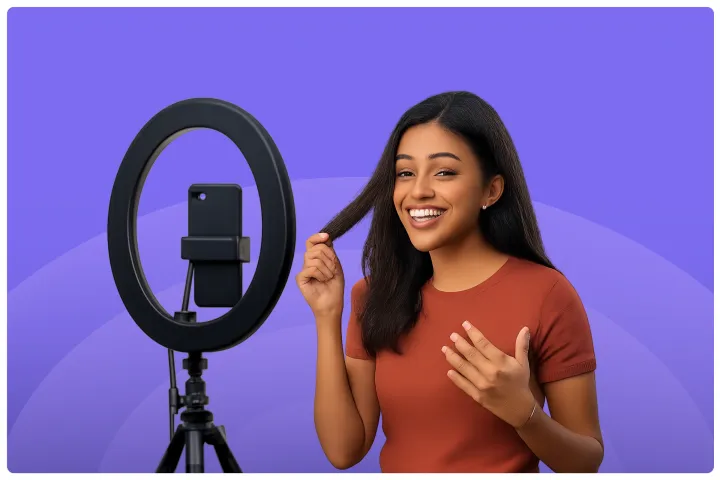
Okay, let's talk about something super important for your brand today: content. Not just any content, but content created by real people and by awesome influencers. It's a big deal, and you're in the right place to understand how to make it work for you. We know you want to connect with your audience, build trust, and see your business grow. So, grab a cup of chai, and let's get into it!
We'll break down everything you need to know about User-Generated Content (UGC) and Influencer-Generated Content (IGC), the good, the tricky, and how you can use both like a pro. Plus, we'll introduce you to a cool platform called ryme.ai that's making things a whole lot easier. Ready? Let's go! 😊
Understanding User-Generated Content (UGC)
So, what exactly is User-Generated Content, or UGC? Simply put, UGC is any kind of content – like photos, videos, reviews, blog posts, or social media updates – that your customers or audience create about your brand. They aren't paid actors or professional marketers; they are real people sharing their genuine experiences.
Think about it. Remember that time you saw someone post an unboxing video of a new phone on Instagram? Or a friend raving about a new cafe on their Facebook story with a delicious-looking picture? That’s UGC!
Here are a few common examples:
- Customer Reviews and Testimonials: When someone leaves a glowing review on your website or a platform like Zomato or Google. For example, "This biryani from [Your Restaurant Name] was the best I've ever had! 🤩 #Foodgasm"
- Social Media Posts: Customers sharing photos or videos of themselves using your product. Imagine someone posting a Reel wearing your clothing brand with a trending audio, showing off how good it looks.
- Blog Posts or Articles: A blogger writing about their experience with your service.
- Contest Entries: When you run a contest asking people to share a photo or video related to your brand (e.g., "Share your best travel photo with our backpack to win!").
- Forum Discussions: People talking about your products or services in online communities like Reddit or specialized forums.
UGC is powerful because it’s authentic. It’s like word-of-mouth marketing, but supercharged for the digital age!
Benefits of UGC
Now, why should you care about UGC? Oh, let us count the ways! It’s packed with benefits that can really give your brand a boost.
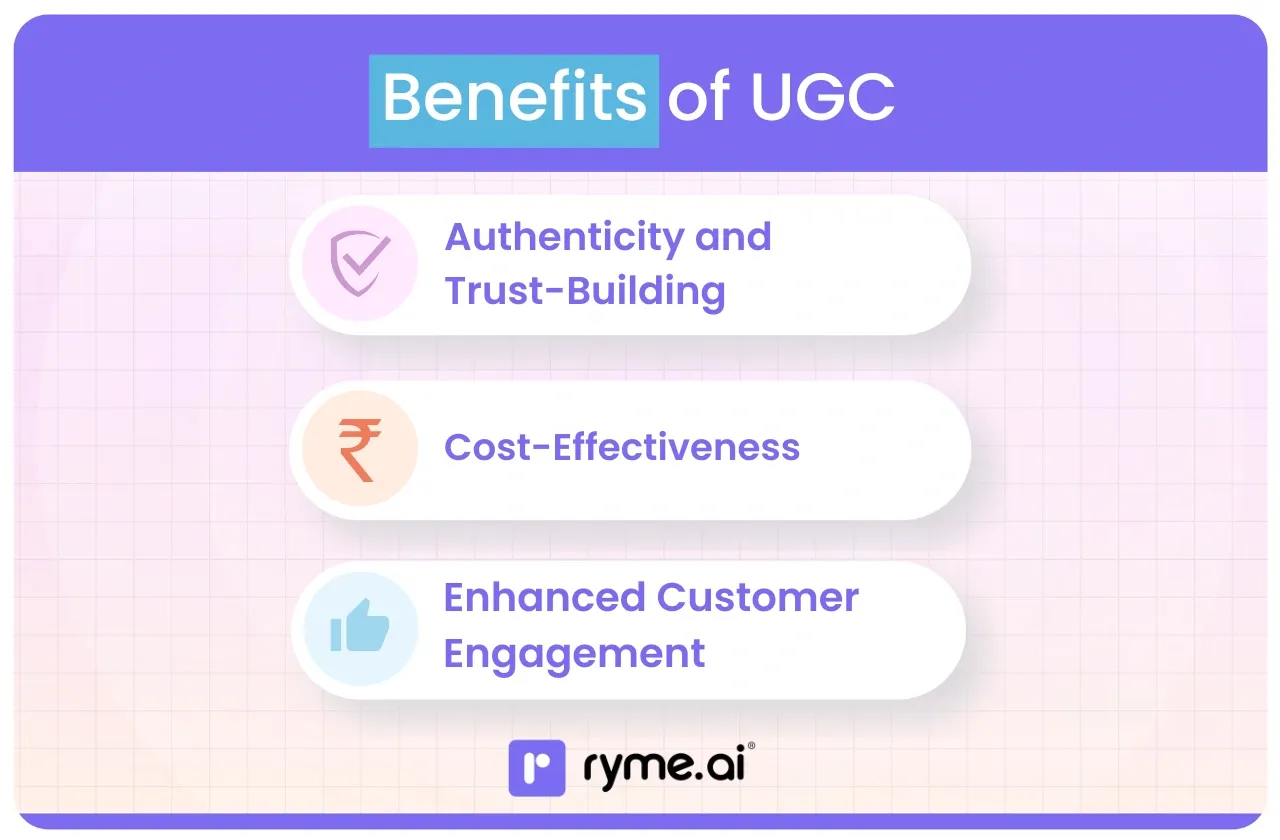
1) Authenticity and Trust-Building
This is the big one. People trust people. Nielsen’s 2023 Global Trust in Advertising study found that 89% of consumers trust recommendations from people they know, and 70% trust online consumer opinions. Think about it – you're more likely to try a new restaurant if a friend recommends it, right? UGC works the same way.
When potential customers see real people using and loving your products, it feels genuine. It's not a polished ad; it's a real story from a real person. This authenticity builds a strong sense of trust. In a world full of ads, UGC cuts through the noise because it’s seen as more credible. It shows that your brand isn't just talking about itself; other people are validating your claims. This can significantly influence purchasing decisions. For instance, a customer seeing another person with a similar skin type achieve great results with your skincare product is far more convincing than a generic ad.
2) Cost-Effectiveness
Let's be real, creating high-quality marketing content can be expensive. Professional photo shoots, video production, hiring models – it all adds up, especially when you're aiming for lakhs of rupees in campaign budgets. UGC can be a lifesaver for your marketing budget.
Your customers are already creating content! You just need to encourage them and find ways to share it (with their permission, of course – we’ll get to that). Instead of spending a fortune on creating every single piece of content from scratch, you can leverage the content your audience is already producing. This doesn’t mean you stop creating your own content, but UGC can supplement your efforts beautifully and economically.
Many brands run contests or simply encourage users to share posts with a specific hashtag. The cost of incentivizing these activities is often much lower than commissioning professional content. For example, offering a small discount or a chance to be featured on your page can generate a wealth of content.
3) Enhanced Customer Engagement
UGC is a fantastic way to get your customers involved and interacting with your brand. When you encourage UGC, you’re not just broadcasting a message; you’re starting a conversation.
Think about a brand asking its followers to share their favorite way to use a product. This sparks interaction, gets people talking, and creates a sense of community around your brand. When customers create content for you, they feel more connected and invested. It makes them feel heard and valued, especially if you feature their content on your official channels. This engagement goes beyond just likes and comments; it fosters loyalty.
A customer whose photo is featured on your Instagram page is likely to become an even bigger fan and advocate for your brand. This increased engagement can also boost your visibility on social media platforms, as algorithms often favor content with high interaction rates. For example, a simple campaign like "Share your WFH setup featuring our ergonomic chair with #MyComfyCorner" can generate tons of engaging posts and make your customers feel like part of a larger community.
So, UGC is like having a team of passionate, real-life advocates creating and sharing positive messages about your brand. It’s genuine, budget-friendly, and super engaging. What’s not to love? But, like anything good, it comes with its own set of things to keep in mind.
Challenges of User-Generated Content
Alright, we’ve talked about how amazing UGC can be. It’s like finding a treasure chest of authentic marketing gold! 💰 But, let's be honest, managing that treasure isn't always a walk in the park. There are some hurdles you might face. Don't worry, though; knowing these challenges is the first step to overcoming them.

1) Quality Control
This is a biggie. When you open the floor to everyone to create content, you're going to get a mixed bag.
- Variability in content quality: Some users will post stunning, well-lit photos and articulate reviews. Others… not so much. You might get blurry pictures, videos with poor audio, or reviews filled with typos. It’s the nature of the beast. The photo of your delicious thali might look less appetizing under bad lighting from a customer's phone camera.
- Aligning UGC with brand standards: Your brand has a certain image, a specific aesthetic, and a particular voice. Not all UGC will naturally align with this. A super casual, slang-filled review might not fit if your brand image is formal and luxurious. Or, a photo taken in a cluttered environment might not be what you want to associate with your sleek, minimalist product.
- Managing inconsistent messaging: Users might focus on aspects of your product or service that aren't your key selling points, or they might misunderstand certain features. This can lead to a muddled brand message if you're not careful about curating and contextualizing the UGC you share.
Imagine you sell beautiful, handcrafted sarees. A customer might post a photo wearing your saree, which is great! But if the photo is poorly lit and the saree is creased, it might not showcase your product in the best possible way.
2) Legal and Ethical Concerns
This is where things can get a bit tricky, and it’s super important to get it right.
- Issues related to copyright and intellectual property: Who owns the content a user creates? Generally, the creator does. So, if you want to use their photo or video in your marketing, you can't just grab it. You need to be mindful of copyright laws. Using someone's content without permission can lead to legal trouble.
- Obtaining proper permissions and rights: This is crucial. Before you reshare, repost, or use any UGC on your website, social media, or ads, you must get clear permission from the original creator. This often means reaching out to them directly and getting their consent in writing. Some brands do this by commenting on the post: "Love this photo! ❤️ Can we share it on our page with credit to you? Please reply with #Yes[YourBrandName] to agree."
- Addressing potential defamation or misuse: What if a user posts something that's defamatory about another person or brand while mentioning your product? Or what if someone uses UGC in a way that's harmful or misleading? You need to be vigilant about the content associated with your brand, even if you didn't create it.
For instance, someone might post a video using your cooking appliance but include copyrighted music in the background. If you reshare that video, you could inadvertently be infringing on music copyright.
3) Content Moderation
With the good comes the… well, not-so-good. You need a plan to filter what’s being shared.
- Identifying and filtering inappropriate or harmful content: Unfortunately, not all UGC will be positive or appropriate. You might encounter spam, offensive comments, fake reviews, or content that violates community guidelines. You need systems in place to catch and remove this quickly. Imagine someone posting an offensive meme using your product in a contest – yikes!
- Balancing freedom of expression with brand safety: You want to encourage genuine expression, but you also need to protect your brand's reputation. It's a delicate balance. Deciding what's acceptable and what's not requires clear guidelines and consistent application.
- Implementing effective moderation strategies: This can be time-consuming. You might need manual moderation (someone physically reviewing content), automated tools (AI-powered filters), or a combination of both. For example, you could set up keyword filters to flag comments containing offensive language.
A popular restaurant chain once faced a backlash when a fake, negative review filled with slurs stayed on their public page for hours because their moderation wasn't quick enough.
4) Scalability Issues
If your UGC campaign is a hit (yay!), you might suddenly find yourself with a mountain of content.
- Managing large volumes of UGC: Sifting through hundreds or thousands of photos, videos, and comments can be overwhelming for a small team. How do you efficiently find the best content to feature?
- Integrating UGC into marketing workflows: Once you've found great UGC and gotten permission, how do you seamlessly incorporate it into your content calendar, social media scheduling tools, and other marketing processes? It needs to become part of your system, not an afterthought.
- Ensuring consistent brand representation across diverse content: With so much content coming from different people, maintaining a cohesive brand voice and visual identity can be challenging. You need a way to curate content that, even in its diversity, still feels like your brand.
Think about a national brand running a festive contest. They might receive tens of thousands of entries. Manually reviewing each one for quality, brand fit, and permissions would be a mammoth task.
5) ROI Measurement
Okay, you're putting effort into UGC. But how do you know if it's actually working and giving you a good return on investment (ROI)?
- Challenges in quantifying the impact of UGC: It can be harder to track the direct sales impact of UGC compared to, say, a paid ad with a specific tracking link. How do you measure the value of increased trust or brand loyalty generated by a customer's enthusiastic video review?
- Setting clear objectives and KPIs: Before you even start encouraging UGC, you need to know what you want to achieve. Is it increased brand awareness? Higher engagement rates? More website traffic? Or direct sales? You need to define your Key Performance Indicators (KPIs).
- Analyzing engagement metrics and conversion rates: You can track things like likes, shares, comments, and reach of UGC. You can also use unique discount codes for UGC campaigns or track click-through rates if you're using UGC on your website that links to product pages. For example, you could see how many people who viewed a UGC gallery on your product page ended up making a purchase.
A 2023 report by Emplifi highlighted that while brands see the value in UGC, consistently measuring its direct contribution to revenue remains a common challenge. Many businesses struggle to connect the dots between a heartfelt customer post and a completed sale.
Phew! That might seem like a lot to think about, but don't let it discourage you. Being aware of these challenges is half the battle won. The good news is there are ways to navigate these issues, and sometimes, looking at alternatives or complementary strategies can also be super helpful. That's where something called Influencer-Generated Content comes in.
Influencer-Generated Content (IGC): A Strategic Alternative
So, we've seen that User-Generated Content (UGC) is awesome for authenticity but can sometimes be a bit like a box of assorted sweets – you're not always sure what you're going to get in terms of quality or brand fit. Now, let's talk about another flavour of content that gives you a bit more control and predictability: Influencer-Generated Content, or IGC.
What is IGC, you ask? IGC is content created by influencers who you partner with and often compensate. These influencers are individuals who have built a dedicated audience and credibility in a specific niche – think fashion, food, tech, travel, fitness, you name it! They create content featuring your brand, product, or service, but it's usually more polished and aligned with a pre-agreed brief.
Think of it this way: UGC is like your customers spontaneously taking cool holiday snaps. IGC is like hiring a talented travel photographer to capture stunning, professional shots of your resort for a brochure, but in a way that still feels engaging and relatable to their audience.
Characteristics of IGC:
1) Created by established influencers: These aren't just any customers; they have a proven track record of creating engaging content and have a loyal following.
2) Often a paid collaboration: While some nano or micro-influencers might collaborate for free products, many IGC campaigns involve payment, ensuring a professional commitment.
3) Content is usually pre-planned or briefed: You, as the brand, typically provide guidelines, key messages, and sometimes even creative direction. This ensures the content aligns with your campaign goals.
4) Higher production quality: Influencers often have better equipment (cameras, lighting) and editing skills than the average user, leading to more professional-looking content.
5) Strategic distribution: Influencers share the content with their own engaged audience, giving you targeted reach.
For example, a beauty brand might collaborate with a makeup influencer to create a tutorial video using their new eyeshadow palette. The influencer will use their skills to showcase the product beautifully, explain its benefits, and share it with their thousands of makeup-loving followers. This is IGC.
Benefits of IGC
Why might you choose to invest in IGC, sometimes alongside or even instead of focusing solely on UGC? Here are some compelling reasons:
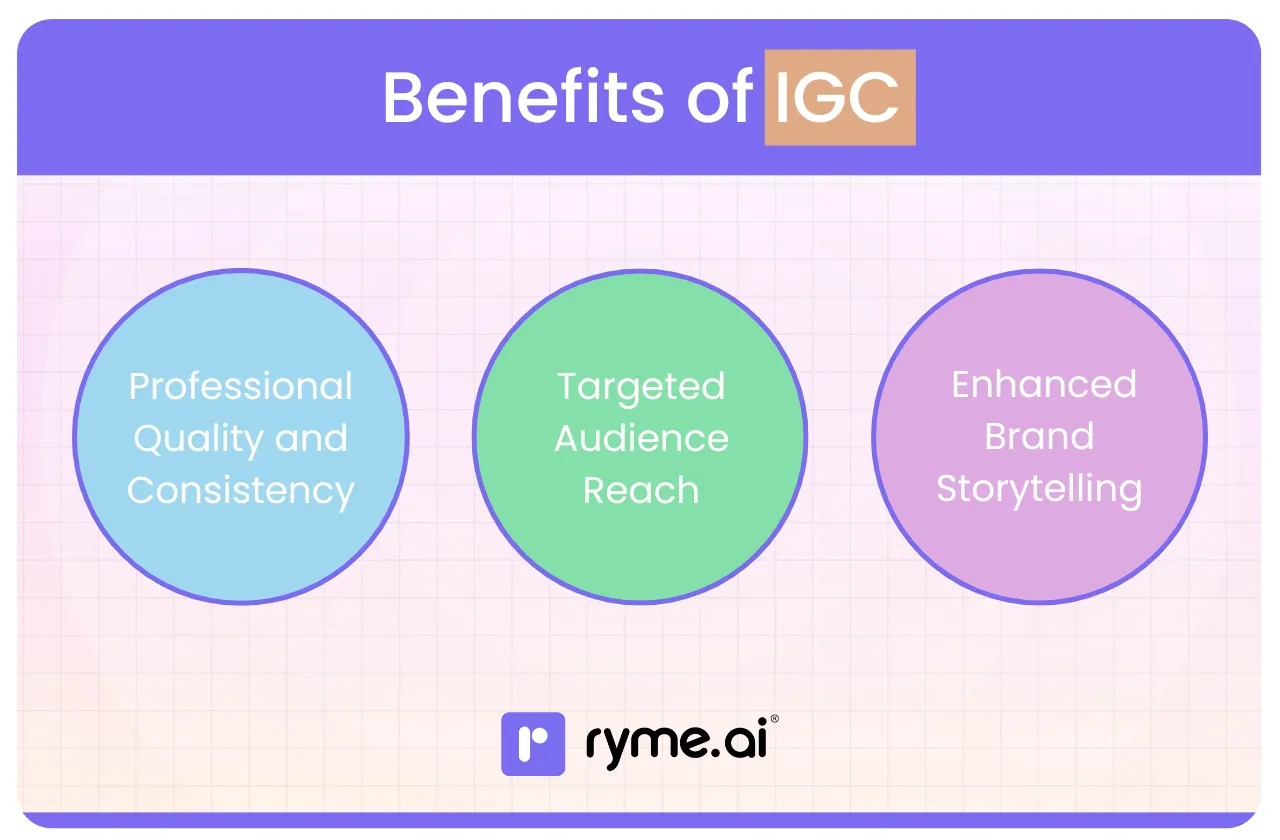
1) Professional Quality and Consistency
This is a major plus point. When you work with an experienced influencer, you can generally expect high-quality photos, well-produced videos, and thoughtfully written captions. Because you provide a brief and often have an approval process, the content is more likely to be:
- Visually appealing: Good lighting, clear focus, attractive composition.
- On-brand: Reflecting your brand's aesthetic, tone of voice, and values.
- Consistent in messaging: Delivering the key points you want to communicate.
This level of quality and consistency can be particularly important for campaigns where a polished image is crucial. According to a 2023 Sprout Social report, 61% of consumers say content quality is a key factor in their decision to follow an influencer, underscoring the importance of professional output. If you’re launching a premium product, for instance, you’d want the content showcasing it to reflect that premium quality.
2) Targeted Audience Reach
Influencers have already done the hard work of building a specific audience. When you collaborate with an influencer whose followers match your target demographic, you get direct access to a highly relevant group of potential customers.
- Niche audiences: A food blogger in Chennai can help your new restaurant reach local foodies. A tech influencer can introduce your new app to an audience genuinely interested in technology.
- Engaged communities: Influencers often have a strong relationship with their followers, who trust their recommendations. A 2024 study by Influencer Marketing Hub showed that brands earn an average of ₹450 for every ₹80 spent on influencer marketing, partly due to this targeted engagement.
Instead of casting a wide net and hoping to catch the right fish, IGC allows you to fish exactly where your
target fish are schooling! 🎣 This makes your marketing spend more efficient.
3) Enhanced Brand Storytelling
Influencers are skilled storytellers. They know how to weave products and services into narratives that resonate with their audience. They can:
- Showcase products in real-life contexts: Instead of just a product shot, they can show how your product fits into their lifestyle.
- Create aspirational content: Making your brand desirable by associating it with their influential lifestyle.
- Explain complex products simply: Breaking down features and benefits in an engaging and easy-to-understand way.
Imagine a travel influencer creating a captivating vlog about their stay at your boutique hotel. They won't just show the room; they'll share their experience, the ambiance, the local culture, and tell a story that makes their audience want to visit too. This kind of narrative is often more impactful than a traditional ad.
A brand selling sustainable clothing could partner with an eco-conscious influencer who can authentically share the brand's mission and the story behind the clothes.
IGC provides a way to get high-quality, on-brand content delivered to a targeted audience, all while leveraging the creative storytelling skills of experienced content creators. It's a powerful tool in your marketing arsenal!
Differences between UGC and IGC
Okay, so we have UGC (your awesome customers creating content) and IGC (your chosen influencers creating content). Both are valuable, but they are not the same. Understanding the key differences will help you decide when and how to use each one.
Let's break it down:
Let's dive a bit deeper into a few key areas:
Control Over Content Creation
UGC: With UGC, you’re essentially putting out a call and seeing what comes back. You have very little direct control over what users create. They'll use their own style, their own words, and their own (sometimes blurry) cameras. This lack of control is part of what makes it so authentic, but also unpredictable. You might ask for photos of your new summer dress, and get everything from a beach shot to a poorly lit selfie in a messy room.
IGC: Here, you're in the driver's seat to a much larger extent. You choose the influencer. You provide a creative brief outlining the key messages, do's and don'ts, and desired aesthetic. You can specify the type of content (e.g., Instagram Reel, YouTube video, blog post). Often, you'll have the right to review and approve the content before it goes live. This means the final output is much more likely to be exactly what you envisioned for your campaign.
Alignment with Marketing Objectives
UGC: UGC is fantastic for building social proof, fostering community, and generating organic buzz. It directly shows that real people are using and enjoying your products. Its objectives are often geared towards engagement and trust. While it can lead to sales, direct campaign alignment can be loose unless very specifically structured (e.g. a contest with very specific entry requirements).
IGC: IGC is often designed with very specific marketing objectives in mind from the outset. Whether it's launching a new product, promoting a sale, driving traffic to a landing page, or targeting a new demographic, the influencer's content is crafted to achieve these goals. The influencer is essentially a creative partner helping you execute a specific part of your marketing plan. For example, if your objective is to get sign-ups for a new app, an influencer can create a tutorial and include a direct swipe-up link in their story.
Cost Considerations
UGC: One of the biggest appeals of UGC is its low cost. Often, the only "cost" is the time spent encouraging, collecting, and curating it. You might offer small incentives like discounts, features on your page, or entry into a prize draw, which are generally much cheaper than paying for professional content creation. A campaign asking users to share their #My[BrandName]Moment might cost you nothing but yield valuable content.
IGC: IGC typically involves a financial investment. Influencers, especially those with larger followings and higher engagement rates, charge for their services. Fees can range from a few thousand rupees for micro-influencers to lakhs or even crores for mega-celebrities. You're paying for their creative skills, production efforts, and access to their audience. While it's an expense, well-executed IGC can deliver a strong ROI by reaching a targeted and engaged audience effectively. For example, paying a food influencer ₹50,000 for a campaign might seem like a lot, but if it results in ₹5,00,000 in new restaurant bookings, it's a good investment.
Here’s a simple analogy:
Imagine you're decorating your new house.
UGC is like your friends and family bringing you little gifts and trinkets for your home. They are heartfelt, genuine, and show they care. Some items will fit perfectly; others might be quirky but still add character. It makes your home feel loved and lived-in.
IGC is like hiring an interior designer. You discuss your vision, your budget, and your preferences. They then use their expertise to select pieces, arrange them beautifully, and create a polished, cohesive look that perfectly matches your brief.
Both approaches have their place and value. The smartest brands often don't see it as an "either/or" situation, but rather how they can make UGC and IGC work together.
Integrating UGC and IGC into Marketing Strategies
So, you've got the lowdown on User-Generated Content (UGC) – that awesome authentic stuff from your customers – and Influencer-Generated Content (IGC) – the polished, targeted content from creators. Now, here’s a thought: what if you didn’t have to choose between them? What if you could get the best of both worlds? 🤔 Ding ding ding! You absolutely can!
Integrating UGC and IGC into your marketing strategy is like making a perfect biryani – you need the right blend of ingredients (content types) cooked just right to create something truly delicious (an effective campaign).
Combining the Authenticity of UGC with the Professionalism of IGC
The magic happens when you find the sweet spot. UGC brings raw, relatable honesty. IGC brings a professional sheen and targeted delivery. Together, they create a powerful and trustworthy brand image.
- UGC builds the foundation of trust: Consistently showcasing genuine customer experiences makes your brand feel approachable and credible. When people see their peers enjoying your products, it resonates deeply.
- IGC adds aspiration and polish: Well-crafted influencer content can elevate your brand's image, showcase your products in an ideal light, and introduce your brand to new, relevant audiences.
Imagine a skincare brand. They could feature UGC photos of customers showing their real skin progress (with permission, of course!). This builds massive trust. Alongside this, they could partner with a beauty influencer for a stunning tutorial video on how to achieve a "glass skin" look using their products. The UGC proves it works for real people; the IGC shows the aspirational results and provides expert tips.

Creating a Balanced Content Mix to Appeal to Diverse Audiences
Not everyone in your audience consumes content the same way or is persuaded by the same things. Some people are swayed by raw authenticity, while others are drawn to beautiful aesthetics and expert opinions. A balanced mix caters to all.
- UGC speaks to the skeptics: For those wary of overly polished advertising, UGC acts as genuine social proof.
- IGC captures the aspirers: For those looking for inspiration or expert guidance, IGC provides high-quality, engaging content.
How to balance:
Understand your audience segments: Who are you trying to reach? What kind of content do they engage with most?
Align content types with campaign goals:
- Building community and trust? Lean heavily on UGC. Run contests, encourage hashtags, feature customer stories.
- Launching a new product or targeting a specific niche? IGC can be very effective. Partner with influencers whose audience aligns with your target.
- Driving sales for a specific promotion? A mix can work well. Influencers can announce the promo, and UGC can show real people enjoying the offer.
- Don't put all your eggs in one basket: Continuously experiment with the ratio of UGC to IGC. Monitor what resonates.
Leveraging Both Content Types Across Various Marketing Channels
Don't just think of UGC and IGC for Instagram. They can be powerful across your entire marketing ecosystem.
Social Media (Instagram, Facebook, X, YouTube, Pinterest):
- UGC: Run hashtag campaigns, feature customer photos/videos in your feed and stories, use UGC in ads (with permission!). Create "customer of the week" highlights.
- Example Instagram Reel Idea: A montage of short video clips submitted by users showcasing their creative ways of using your product, set to trending music.
- IGC: Influencer unboxings, tutorials, reviews, styled shoots, takeovers of your account.
- Example Instagram Post: An influencer shares a carousel post with high-quality images using your product, with a detailed caption explaining their experience and a call-to-action. (Imagine a food influencer posting a beautiful flat lay of a meal kit from your brand, with subsequent slides showing the cooking process and final dish).
Website:
- UGC: Create a "customer gallery" on product pages, embed social media feeds showcasing UGC, use testimonials and reviews. This can significantly boost conversion rates. Imagine an e-commerce site for apparel where, below the professional model photos, there's a section "See How Our Customers Wear It" with UGC.
- IGC: Feature influencer photos and videos on landing pages, use influencer testimonials (with permission), embed influencer review videos.
Email Marketing:
- UGC: Include customer photos or reviews in your newsletters to build social proof. "See what others are saying!"
- IGC: Share influencer content relevant to your email subscribers, announce influencer collaborations or giveaways.
Paid Advertising:
- UGC: UGC-style ads often outperform traditional ads because they feel more authentic and less like a hard sell. A study by Stackla found that consumers are 2.4x more likely to say UGC is most authentic compared to brand-created content.
- IGC: Use influencer-created visuals and videos in your ad campaigns for higher engagement and credibility.
Offline Marketing:
- UGC: (With permission) Use customer photos in print materials, brochures, or even in-store displays.
- IGC: Feature influencer endorsements in print ads or at events.
Storytelling Example:
Let's say Riya runs an online store selling handmade jewelry.
UGC Strategy: Riya encourages customers to post photos wearing her jewelry with the hashtag #RiyasRadiance. She features the best photos on her Instagram stories and her website's "Community Looks" page. She even runs a monthly contest where the best UGC photo wins a gift voucher. This builds a community and shows how her jewelry looks on real people.
IGC Strategy: For her new festive collection, Riya collaborates with Priya, a mid-tier fashion influencer known for her elegant ethnic style. Priya creates a series of high-quality Instagram posts and a Reel showcasing different pieces from the collection, styling them with festive outfits. Priya talks about the craftsmanship and how the jewelry makes her feel special. She includes a unique discount code for her followers.
Integration: Riya uses Priya's professional photos on her website's homepage banner and in her email newsletter announcing the new collection. She also runs targeted ads using Priya's Reel. Simultaneously, she continues to share the organic UGC from customers purchasing the new collection, creating a loop of authentic excitement and professional endorsement.
By blending the genuine enthusiasm of her customers with the polished appeal of an influencer, Riya effectively builds trust, reaches a wider audience, and drives sales for her jewelry brand. She's not just selling jewelry; she's selling a feeling, an experience, validated by both peers and trusted tastemakers.
This integrated approach allows you to create a richer, more diverse, and ultimately more effective marketing strategy that resonates with customers at different touchpoints and through different voices. But managing all this, especially the influencer side, can still feel like a lot of work. That's where platforms designed to simplify the process come in handy!
ryme.ai – Bridging the Gap Between UGC and IGC
Okay, so we've established that both UGC and IGC are super valuable. UGC brings that amazing realness, and IGC delivers polished, targeted content. But wouldn't it be great if there was a way to make managing your influencer collaborations – the IGC part – smoother, more efficient, and maybe even help ensure that the IGC feels as authentic as possible?
This is where platforms like ryme.ai step in. Think of ryme.ai as your smart assistant for influencer marketing, designed to help you get the best of IGC while making the whole process way less of a headache. It's built to bridge that gap, helping you generate high-quality content from creators that feels genuine and truly connects with your audience.
Introduction to ryme.ai as an influencer collaboration platform
ryme.ai is an AI-powered platform specifically created to help brands like yours connect and collaborate with influencers. It’s not just a database of names; it’s a tool that aims to streamline the entire influencer marketing journey, from finding the right faces for your brand to measuring the success of your campaigns. The goal is to make influencer collaborations more accessible, transparent, and effective, whether you're a startup just dipping your toes into influencer marketing or an established brand looking to scale your efforts.
Essentially, ryme.ai wants to take the "ugh" out of managing IGC by simplifying the complexities we talked about earlier, like finding relevant influencers, ensuring content quality, and tracking results.
Features of ryme.ai
What makes ryme.ai stand out? It’s packed with features designed to make your life easier and your influencer campaigns more impactful.
1) AI-Powered Influencer Discovery and Campaign Management
Finding the right influencer is like finding the right key for a lock – it needs to be a perfect fit! ryme.ai uses Artificial Intelligence to help you with this:
Smart Discovery: Instead of endlessly scrolling through social media, you can input your campaign goals, target audience, niche, and other criteria. The AI then suggests influencers who are most likely to be a good match. It looks beyond just follower counts, considering engagement rates, audience demographics, content quality, and even an influencer's past performance.
Campaign Management Hub: Once you’ve found your influencers, ryme.ai provides a centralized dashboard to manage your campaigns. You can create briefs, communicate with influencers, track content submission, and manage payments all in one place. No more juggling spreadsheets, emails, and DMs! Think of it as your mission control for influencer collaborations. 🚀
2) Zero-Commission Model and No Minimum Budget Requirements
This is a big plus, especially for businesses watching their marketing spend (and let's be honest, who isn't?).
Zero Commission: Many traditional agencies or platforms take a hefty percentage of your campaign budget as commission. ryme.ai operates on a zero-commission model. This means more of your budget goes directly to the influencers and the campaign itself, maximizing your ROI. You pay for the platform's subscription, and that's it.
No Minimum Budget: Worried you don't have lakhs of rupees to start? No problem! ryme.ai is designed to be accessible for businesses of all sizes. You don't need a massive minimum budget to get started. This opens up influencer marketing to smaller brands and allows you to experiment and scale at your own pace. Whether you want to collaborate with a few nano-influencers for ₹5,000 or run a larger campaign, the platform can accommodate you.
3) Real-Time Performance Analytics and Reporting Tools
"Is this influencer campaign actually working?" ryme.ai helps you answer that critical question with data.
Track Key Metrics: Monitor the performance of your campaigns in real-time. See metrics like reach, engagement (likes, comments, shares), impressions, click-through rates, and even estimated ROI.
Comprehensive Reports: Generate easy-to-understand reports that show you what's working and what's not. This data is crucial for optimizing future campaigns and demonstrating the value of your influencer marketing efforts to stakeholders. No more guessing! You get clear insights into how your IGC is contributing to your goals.
4) Streamlined Content Approval Workflows
Remember the challenge of ensuring IGC aligns with your brand? ryme.ai helps with that too.
Clear Briefs: Create detailed campaign briefs directly within the platform so influencers know exactly what you're looking for.
Content Submission & Review: Influencers submit their content through the platform. You can then review it, provide feedback, request revisions, or approve it – all in one streamlined process. This avoids endless email chains and ensures that the content meets your standards before it goes live. It helps maintain brand consistency and message accuracy.
Imagine you're launching a new range of organic spices. Using ryme.ai, you could:
- Input that you're looking for food bloggers in India, with an audience interested in healthy cooking, and an engagement rate above 3%.
- The AI suggests a list of suitable influencers. You can then review their profiles and content directly on ryme.ai.
- You can short-list a few creators, send them a campaign brief (mentioning key messages about purity, flavour, and perhaps a specific recipe idea), and agree on deliverables and payment (e.g., 1 Instagram post + 3 stories for ₹10,000).
- The influencer creates the content and submits it. You can review the content created and provide your feedback and the necessary tweaks to the provided content.
- Once approved, the influencer posts it.
- You track the post's performance (likes, comments, reach, how many people used a unique discount code) directly on your ryme.ai dashboard.
How ryme.ai Addresses Common Challenges
Now, let's connect the dots. How do these features specifically help with the IGC (and even some UGC-related) challenges we discussed earlier?
1) Ensuring Content Quality and Brand Alignment
Challenge: Getting IGC that matches your brand's look, feel, and messaging.
ryme.ai Solution: The AI-powered discovery helps you find influencers whose existing content style already resonates with your brand. The clear briefing tools and streamlined content approval workflow ensure that you have oversight and can guide the content creation process to meet your quality and brand standards. No more hoping for the best – you get to co-create and approve.
2) Simplifying Legal and Ethical Considerations
Challenge: Managing contracts, usage rights, and ensuring transparent communication with influencers.
ryme.ai Solution: While ryme.ai may not provide direct legal advice (you should always consult a legal professional for that!), it facilitates clear communication and agreement on deliverables and usage rights within the campaign setup. Having a centralized platform for these agreements helps keep everything documented. Some platforms also offer template agreements or frameworks. (It's important to verify ryme.ai's specific offerings in this regard). By professionalizing the interaction, it encourages clearer terms from the outset.
3) Facilitating Scalability and Integration
Challenge: Managing multiple influencer collaborations, especially as you grow, and integrating IGC into your broader marketing.
ryme.ai Solution: The campaign management hub allows you to handle multiple influencers and campaigns simultaneously without getting overwhelmed. You can scale your efforts up or down as needed. The ability to export data or see clear reports can also help you integrate IGC performance metrics into your overall marketing analytics.
4) Providing Measurable ROI Insights
Challenge: Knowing if your investment in IGC is actually paying off.
ryme.ai Solution: The real-time performance analytics and reporting tools are gold here. You can track specific KPIs, measure engagement, and potentially even link influencer activity to sales (e.g., through unique discount codes or UTM parameters tracked by the platform). This data-driven approach helps you understand the tangible impact of your IGC, justify your spend, and make smarter decisions for future campaigns. You can concretely show your team, "We spent ₹X on this influencer campaign, and it generated Y reach, Z engagement, and contributed to ₹P in sales."
By tackling these common pain points, platforms like ryme.ai aim to make influencer marketing (your IGC strategy) more systematic, predictable, and ultimately, more successful. It helps you harness the power of influencers to create compelling content that feels authentic while still meeting your brand's strategic objectives. It’s about making IGC less of a gamble and more of a calculated, effective marketing tactic.
Best Practices for Leveraging UGC and IGC
Alright, you're now equipped with a solid understanding of User-Generated Content (UGC), Influencer-Generated Content (IGC), and even how cool platforms like ryme.ai can make your life easier. So, how do you bring it all together and knock your content strategy out of the park? 🏏 It's all about having a smart approach and following some best practices.
Think of these as your friendly guideposts to make sure you’re getting the most out of both the authentic voice of your customers and the polished creativity of influencers.
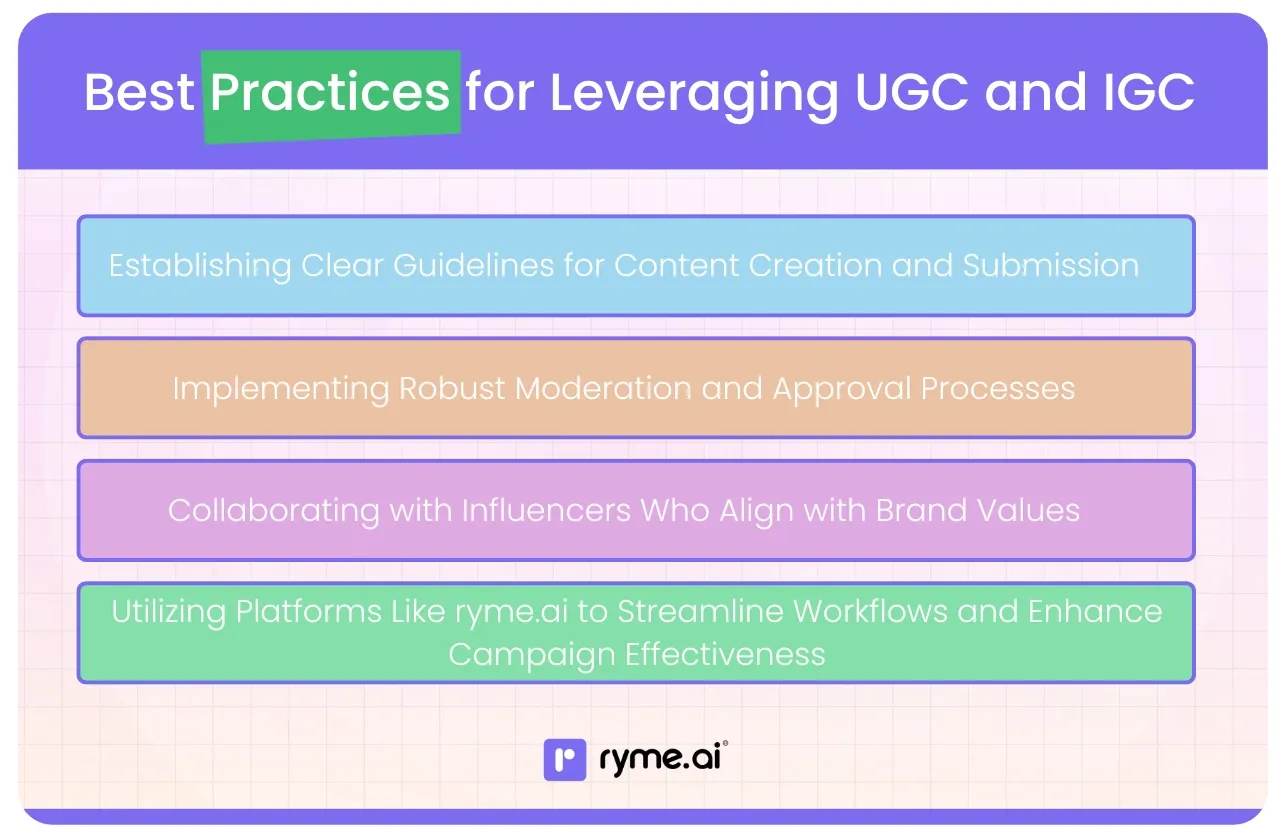
1) Establishing Clear Guidelines for Content Creation and Submission
Whether it's for UGC or IGC, clarity is king (and queen!). People need to know what you're looking for.
For UGC:
- Keep it Simple & Fun: Don't make your guidelines overly complicated. If you're running a contest, clearly state the theme, what users need to do (e.g., "Share a photo of you enjoying our new Mango Lassi with #MyMangoMoment"), any specific hashtags to use, and the deadline.
- Provide Inspiration: Share examples of the kind of content you love. This helps users understand the desired aesthetic or vibe.
- Be Upfront About Usage: Briefly mention how you might use their content (e.g., "We might feature our favorites on our page!"). For more formal use (like ads), you'll need explicit permission later.
- Example for a travel company encouraging UGC: "Show us your most breathtaking travel moment in India! 🇮🇳 Post your photo or Reel using #IncredibleIndiaAdventures and tag us @[YourBrandName]. We'll share our top picks every week! Remember, clear, well-lit shots get noticed! 😉"
For IGC (especially when using platforms like ryme.ai or working directly):
- Create Detailed Briefs: This is crucial. Your brief should include:
- Campaign Objectives: What do you want to achieve (awareness, clicks, sales)?
- Key Messages: What are the 1-3 main points you want the influencer to convey?
- Target Audience: Who are they speaking to?
- Content Requirements: Type of content (post, story, Reel, video), number of pieces, specific features to highlight.
- Do's and Don'ts: Things to definitely include or avoid (e.g., "Do showcase the eco-friendly packaging," "Don't mention competitors").
- Visual Guidelines: Any preferred aesthetics, colors, or styles.
- Call to Action (CTA): What do you want the audience to do (visit website, use a discount code, sign up)?
- Disclosure Requirements: Remind influencers to clearly disclose the partnership (e.g., #ad, #sponsored).
- Timeline: Submission deadlines, posting dates.
Template Snippet for an IGC Brief (e.g., for a new cafe launch):
- Campaign Goal: Drive footfall to our new cafe in Koramangala, Bangalore.
- Key Message: "Your new go-to spot for amazing coffee, delicious pastries, and a cozy vibe. Perfect for work or chilling with friends!"
- Deliverables: 1 Instagram Reel (min 30 secs) showcasing the cafe ambiance, coffee, and one food item. 2 Instagram Stories with a "Swipe Up" link to our location.
- Do: Capture the natural light, our unique wall art, and the freshness of our food. Mention our introductory offer (15% off).
- Don't: Use filters that distort food colors.
- CTA: "Come visit us! Link in bio/stories for directions. Don't miss our launch offer!"
- Hashtags: #[YourCafeName] #[NewCafeBangalore] #CoffeeLovers #KoramangalaFoodies #[YourBrandSpecificHashtag]
- Disclosure: Use #ad or #collab in the caption/first story frame.
Clear guidelines save everyone time and ensure you get content that actually meets your needs.
2) Implementing Robust Moderation and Approval Processes
This is non-negotiable for both protecting your brand and ensuring quality.
For UGC:
- Monitor Regularly: Keep an eye on content posted with your brand hashtag or submissions to contests.
- Have Clear Internal Standards: Define what's acceptable and what's not (e.g., no offensive language, no nudity, no irrelevant content).
- Use Moderation Tools: For high volumes, consider tools that can help filter content based on keywords or image recognition. Social media platforms also have built-in filters.
- Act Quickly: Remove inappropriate or harmful content promptly.
- Permission Protocol: Before re-sharing UGC on your official channels or using it in marketing, always get explicit permission from the creator. A common way is to comment on their post: "Love this shot, @[Username]! ❤️ Mind if we share it on our page and credit you? If yes, please reply with #Yes[YourBrandName]." Keep a record of these permissions.
For IGC:
- Multi-Stage Approval (if needed): For larger campaigns, you might have a concept approval stage, a draft review stage, and a final approval stage. Platforms like ryme.ai often have features for this.
- Provide Constructive Feedback: If revisions are needed, be specific and clear about what needs to change and why.
- Check for Disclosure: Ensure the influencer has correctly disclosed the sponsored nature of the post as per advertising guidelines. This is crucial for transparency and legality.
- Confirm Usage Rights: Your contract or agreement with the influencer should clearly state where and for how long you can use the content they create (e.g., on your social media, website, in ads for 6 months).
Think of your approval process as quality control. It ensures that what goes out with your brand name attached is something you're proud of.
3) Collaborating with Influencers Who Align with Brand Values
This is especially key for IGC but also good to keep in mind if you're actively seeking out UGC from specific communities.
- Look Beyond Follower Count: A huge following doesn't always mean it's the right influencer for you. More important is:
- Audience Demographics & Psychographics: Does their audience match your target customer?
- Engagement Rate: Do their followers actively interact with their content? High engagement (likes, comments, shares relative to follower count) is often better than just a large number of passive followers.
- Content Quality & Style: Does their existing content aesthetic fit your brand?
- Authenticity & Credibility: Do they seem genuine? Do they have a good reputation?
- Brand Values Alignment: This is super important. If your brand is all about sustainability, partnering with an influencer who constantly promotes fast fashion might send mixed messages. If you're a family-friendly brand, avoid influencers known for controversial content.
Research from Stackla (2023) indicated that authenticity is the most important factor (88%) for consumers when deciding which influencers to follow and trust.
Do Your Homework:
- Review their past content thoroughly.
- Check their audience comments – what kind of interactions are happening?
- Look for past brand collaborations – how did they perform?
- Use tools like ryme.ai that help vet influencers based on these criteria.
Build Relationships: Think of influencer collaborations as partnerships, not just transactions. Good relationships lead to more authentic and enthusiastic endorsements.
Choosing the right influencer is like choosing a spokesperson for your brand. You want someone who genuinely reflects what you stand for. Imagine you sell vegan products. Partnering with a known vegan lifestyle influencer who truly believes in the lifestyle will be far more impactful and credible than someone just doing it for a paycheck.
4) Utilizing Platforms Like ryme.ai to Streamline Workflows and Enhance Campaign Effectiveness
We've talked about ryme.ai, and it's a great example of how technology can simplify your life.
For IGC Management:
- Discovery: Leverage AI to find relevant influencers quickly, saving you hours of manual searching.
- Campaign Organization: Keep all your briefs, communications, content submissions, and approvals in one place. No more messy inboxes or lost files!
- Performance Tracking: Use built-in analytics to see what's working in real-time. This allows you to make data-driven decisions and optimize your campaigns for better results.
- Payment Processing: Some platforms also help streamline influencer payments, making that part of the process smoother.
Benefits:
- Saves Time & Resources: Automation and centralization free up your team to focus on strategy rather than administrative tasks.
- Improves Efficiency: Streamlined workflows mean campaigns can be launched and managed more quickly.
- Enhances ROI: Better influencer selection, optimized campaigns, and clear performance data all contribute to a better return on your investment.
- Scalability: Easily manage more campaigns and influencers as your brand grows.
Using a dedicated platform isn't a must for everyone, especially if you're just starting with one or two micro-influencers. But as you scale your IGC efforts, these tools become invaluable for staying organized, efficient, and effective. Think of it as upgrading from manually tracking your expenses in a notebook to using a sophisticated accounting software – it just makes things run better.
By following these best practices, you'll be well on your way to creating a vibrant, engaging, and effective content strategy that beautifully blends the authenticity of UGC with the targeted impact of IGC. It’s about working smarter, not just harder, to connect with your audience in meaningful ways. 😊
Conclusion
Wow, we’ve covered a lot of ground, haven’t we? From understanding the raw power of your customers' voices in User-Generated Content (UGC) to the polished storytelling of Influencer-Generated Content (IGC), it’s clear that both have a massive role to play in modern marketing.
You’ve learned that UGC is your secret weapon for building unshakeable trust and authenticity. It’s cost-effective and creates amazing engagement because it’s real people sharing real experiences. Think of all those fantastic customer photos, reviews, and unboxing videos – pure gold! ✨
But we also got real about the challenges: maintaining quality control, navigating those tricky legal and ethical waters (permissions are key!), the constant need for content moderation, the struggle of scaling up, and figuring out how to truly measure your ROI. These are genuine hurdles, but definitely not roadblocks if you’re prepared.
